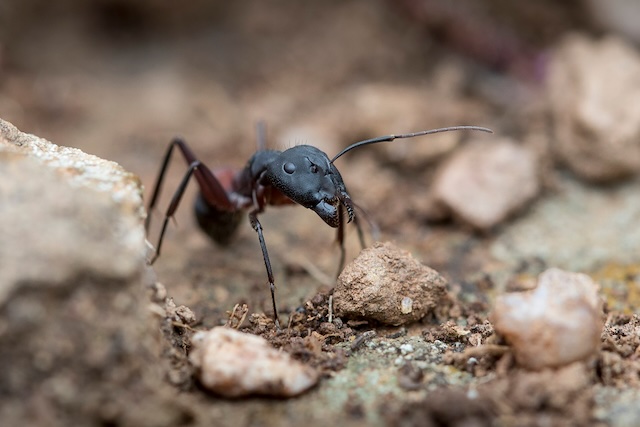It can be scary for a person to find any kind of ant problem, but carpenter ants are especially dangerous. These insects that damage wood are a unique threat to the structure of your home. We’ll solve the puzzle of carpenter ant infestations in homes by explaining how they behave, showing you the signs of an infestation, and giving you tips on how to get rid of them.
A home version of The Carpenter Ant Chronicles
Carpenter ants are not your typical house guests because they are very big and can dig through wood. Carpenter ants don’t eat wood like termites do; instead, they make tunnels in wood to nest in. To keep your home safe, you need to be able to recognize these ants and figure out how they build their nests.
How to Spot Carpenter Ants
Making an ID is the first line of defence. Carpenter ants are between 6 and 13 millimetres long and can be different colours, but most of the time they are black, red, or a mix of the two. One thing that sets it apart is a single, pointed node between the thorax and belly. Watch out for swarmers, which are reproductive ants with wings. They show that the colony is fully grown.
The Signs That You Have an Infestation
When carpenter ants get into a home, they leave behind small but important signs. If you see:
Sawdust-Like Frass: Carpenter ants clean out their tunnels of wood chips that look like sawdust. It’s a bad sign when you see piles of this frass near wooden buildings.
Wood That Sounds Hollow: Tap on wood surfaces. Hollow or rustling sounds could mean that there are tunnels inside, which is a sign that carpenter ants are working.
Winged Swarmers: If you find winged ants inside, especially in the spring, it means that the colony is fully grown. The goal of these swarmers is to build new nests.
Figuring out how they build their nests
Carpenter ants like to build their nests in wood that is damp or broken. Because they like wet places, outbreaks are most likely to happen in places where there is water damage or a leak. Wall voids, attics, crawlspaces, and even wooden buildings in your yard are common places for birds to nest.
The Danger to “Home Sweet Home”
Carpenter ants directly damage your home’s structure, while sidewalk ants are more of a bother than a threat. Their tunnelling makes wood weaker, which could cause serious damage over time. If you ignore the signs, you could end up with expensive fixes and less safety in your home.
Protective steps that homeowners can take
Take care of moisture problems: To keep carpenter ants out of your home, fix any water leaks right away and make sure damp places have enough air flow.
Regular Checks of the Wood: Look for signs of wood damage on a regular basis. Finding a small ant problem early on can keep it from growing into a big one.
Landscaping Tips: Cut back trees and plants that grow close to your house so that carpenter ants don’t have easy access to wooden structures.
Sealing Entry Points: To stop ants from getting in, seal any holes or cracks in the outside of your home. Pay attention to the places where services enter your home.
Professional Pest Control: Talk to a professional if you’re not sure what to do or if you know for sure that you have a problem. Professionals in pest control can find nests, figure out how bad the problem is, and fix only the areas that need it.
Understanding how carpenter ants get into homes is important for getting rid of pests effectively. Homeowners can protect their homes from the silent but possibly destructive threat of carpenter ants by being alert, spotting early warning signs, and taking preventative steps.
